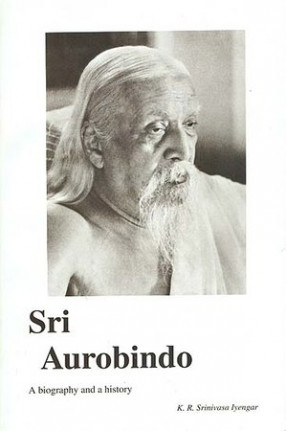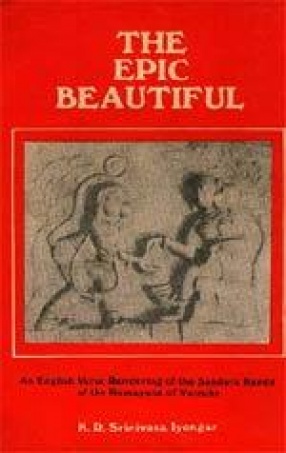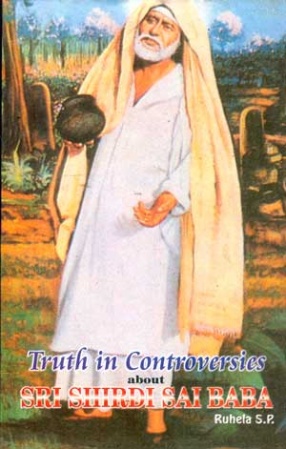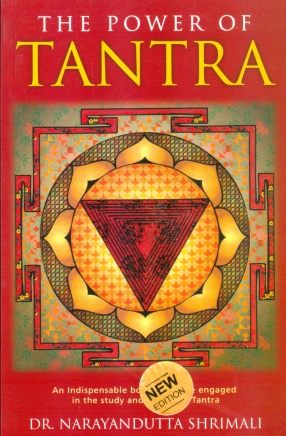Sri Aurobindo - A Biography and a History
The first edition of this book was published on 21 February 1945. When I started work on it late in 1942, I was not slow to realise that the biographer of Sri Aurobindo had himself to be a poet and a prophet, a philosopher and a Yogi; and being fully conscious of my limitations, I knew that the task I had undertaken greatly exceeded my abilities. Neverthless I persevered, benefiting by encouragement, counsel and criticism from several friends in Sri Aurobindo Ashram, Pondicherry. and it was my unique good fortune that Sri Aurobindo himself was magnanimous enough to go through my first and second drafts of February 1943 and November 1943 respectively, rectifying many errors whether of fact or interpretation. In the result, the book was received warmly as a reliable first introduction to Sri Aurobindo's life and work. The second edition appeared on 21 February 1950. In preparing it for the press, I had retained the main text of the first edition, but I had also tried to make it up-to-date by introducing additional matter here and there, and supplying a few more footnotes. Although the second edition sold out not long afterwards, and although there were calls for a new edition, for about twenty years I found myself unable to return to this task. During this period a great deal of valuable material came to light, and a large mass of Sri Aurobindo's own writings - prose as well as poetry - was posthumously published. In his Life of Sri Aurobindo (which has gone into three editions), the late Sri Ambalal B. Purani put together the numerous findings of his indefatigable research. Both Purani and Nirodbaran have also published the personal records they had maintained of Sri Aurobindo's conversations with his disciples at Pondicherry; and yet another record of the talks, the condensed version by Veluri Chidanandam, has been appearing serially in Mother India. Besides, thanks to the dedicated labours of disciples like Nolini Kanta Gupta, K. D. Sethna and Kishore Gandhi, an increasing number of Sri Aurobindo's poems, plays, translations, essays, commentaries, letters and miscellaneous literary fragments have been deciphered, edited and given to the world. And now the definitive Centenary Edition of Sri Aurobindo's Works in thirty large volumes is in progress, and is expected to be completed before 15 August 1972. While I no doubt tried desperately to keep in touch with this growing literature - both writing by Sri Aurobindo and writing on Sri Aurobindo the idea of a third edition of my biography neverthless filled me with grave misgivings. It was clear that a casual or piecemeal revision wouldn't serve the purpose. With each succeeding year, the task only became more and more difficult, and I felt correspondingly inadequate and was afraid even to make a beginning. I realised too that I could look for no respite so long as I consented to be shackled to the arduous tasks of university teaching or administration. Having at last towards the end of 1968 divested myself of the Vice-Chancellorship of Andhra University, I found a place of retreat and an arbour of peace in the Delhi Branch of Sri Aurobindo Ashram. And there, after some more delays caused by the pressure of other literary work, I started hopefully and resolutely on 15 August 1970. While the old ground-plan was more or less retained, in the super-structure it was to be practically a new book now - a Biography and a History- and so the work, once begun, made slow if steady progress. After the first chapter there was a break, when I paid a visit to the South; returning to Delhi, I wrote the next twelve chapters in one long spell during September-November 1970; after another break, between January and April 1971 I completed the next twelve chapters - all in Sri Aurobindo Ashram, New Delhi. The last three chapters, however, were written at my daughter, Prema Nandakumar's place in Visakhapatnam during July-August, and on the morning of 15 August 1971 I reached the last page and heaved a sigh of delighted relief. Presently I made the pilgrimage to Pondicherry in the company of Padmasani my wife, and on an auspicious morning early in September made an offering of the typescript the modest harvest of our aspiration and striving - to the Gracious Mother. It was Grace indeed what else? that such should have been the consummation of our effort and faith. If the "onlie true begetter" of the first edition was the late Shri Shankargauda B. Patil, my dear friend of Belgaum days, the "onlie true begetter" of this new "Biography and History" is Shri Surendra Nath Jauhar of Sri Aurobindo Ashram, New Delhi, who created the right conditions for me and enveloped me with under- standing and love. True and devoted sons of the Mother, they have been to me elder brothers beyond cavil and beyond compare. For the rest, my debt to my friends in Sri Aurobindo Ashram, Pondicherry, and its Delhi Branch, is incommensurable, and since to go into details must make the Preface endless, I have reluctantly to satisfy myself with this collective expression of my heartfelt gratitude. I have also heavily drawn upon published and other sources, and I have indicated my indebtedness, generally in the Bibliography, and more particularly in the footnotes. It has not been possible to follow a uniform scheme of page-references in the footnotes. As regards Sri Aurobindo's own writings, the pagination usually differs from edition to edition, and I have had to refer only to the editions immediately accessible to me; and some works - Collected Poems and Plays, for example - have long been out of print. For Savitri and for the major prose works I have generally used the uniform Sri Aurobindo International Centre of Education Collection. Once the Centenary Edition is completed, it should be possible to standardise the pagination, and I do hope, that, when the time comes for me to prepare the next edition of my book, I would be able to make all the references only to the definitive Centenary Edition. Again, Purani's Life of Sri Aurobindo has gone through three editions, but my references (except where otherwise clearly indicated) are to the second (1960) edition alone. No elaborate apology is needed, perhaps, either for the inclusion of fairly detailed discussions of Sri Aurobindo's writings or for the occasional repetitions and recapitulations in the course of the book or yet for describing it as "a Biography and a History". In Sri Aurobindo 's life, his writing was not a thing apart; it was (in the Miltonic phrase, but in an even truer sense) "the precious life-blood of a master spirit". The inner man was the real man, and the inner man is best revealed for us in his writing. Poetry, drama, philosophy, Yoga exegesis, political comment, sociological inquiry, literary and art criticism, educational theory - everywhere there 'is the signature of the inner man, the light from the inner Sun, the tremor of the unique Sensibility. If it be true, as Keats said, that "Shakespeare led a life of allegory, his works are his comments on it", might it not be said of Sri Aurobindo that his was a life of progressive Divine manifestation, and his writings are but its radiations and recordings. In a book of this size aiming at all-inclusiveness, some repetition is unavoidable and could even be purposeful: and periodic recapitulations become almost a necessity. The shifts and alternations in theme - the man and the milieu, the inner and the outer life, literature and politics, war and peace, philosophy and Yoga - may seem a little bewildering without a measure of interior stitching to hold it all together as a composite and integral whole. It is a single life yet, but its divers strands, for all the apparent criss-crossing, are meant to coalesce into an intricate fabric of paramount significance. As for the sub-title, even as Sri Aurobindo's Writings are not isolable from his Life, his Life too is not easily isolable from the mainstream of Indian and world history. His Sun-like effulgence shot out in many directions and made its mark everywhere, clearing the mists, cleansing, destroying, revitalising, transfiguring, and what was brick before now became charged with new life and what was mere tinsel came to be alchemised into gold. The period of his active participation in politics was but a few years: but both before and after, Sri Aurobindo sent out creepers of influence far and wide, not the less effective although this action was not open, or was encompassed only through means other than material. The whole story is not known, or cannot be told yet; but even what is set forth in the following pages will, I venture to hope, bear out the claim that in his time Sri Aurobindo successfully invoked Bhavani Bharati as the irresistible force of national resurgence and played for our age the crucial role of leader of humanity's evolving destiny. The book having grown to more than three times the size of the earlier edition, it became necessary to bring it out in two volumes racing against time. It is thus a pleasure and a duty to thank the Manager and Staff of Sri Aurobindo Ashram Press, Pondicherry, for undertaking and completing in the spirit of sadhana the difficult task of producing this rather voluminous work both expeditiously and efficiently. It is also peculiarly appropriate that this book should be published under the auspices of Sri Aurobindo International Centre of Education in the Sri Aurobindo Centenary year.
Get it now and save 10%
BECOME A MEMBER








Bibliographic information